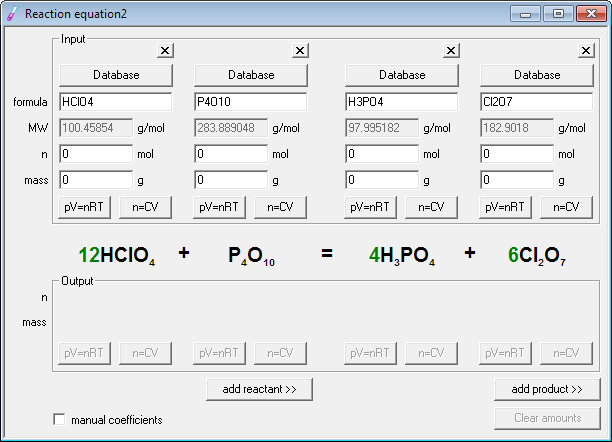

(The subscript value like 2 in O 2 shows how many oxygen atoms are there in a molecule.) However, since the equation is unbalanced, the reaction is not real, because it demonstrates a reaction where one iron atom yields two atoms of iron. This chemical equation shows that two atoms of oxygen react with one atom of iron to form 2 atoms of iron and three atoms of oxygen. This fact is true not only for element types in the production but for the numbers as well. The product of a reaction must correspond to the actual reagents. Take a look at the following example of how rusting of iron takes place.Ī chemical equation’s elemental parts never get lost or destroyed. Using mole ratio to calculate moles of yielded substances in the reactionĬonverting moles of needed elements to the required units. Generally, solution of all stoichiometry issues can be found in just a few steps: The conversion factors in chemistry can be used to solve stoichiometric problems. Now, as the discussion of what is meant by stoichiometry is completed, let us move further with stoichiometric calculations based on chemical formulas.

In real life, since isotopes exist, calculations of mass ratio are done using molar masses. The volume ratio of gases is the same according to Ideal Gas Law, but ratio of mass of one reaction has to be determined from reactants and products’ molecular masses. In these reactions, gases have a known volume, pressure and temperature and hence assumed as ideal gases. Next, gas stoichiometry is concerned with the reactions that involve gases. This process is known as composition stoichiometry. For the above reaction example, reaction stoichiometry evaluates the relationship of amounts of methane and oxygen that reacts to give out water and carbon dioxide.Īs atomic weight and moles have a relation between them, the ratios which are calculated by stoichiometry are used to measure quantities in terms of weight in a balanced equation. The description of quantitative relationships among the elements while they participate in reactions is called reaction stoichiometry. Now that you have understood what is stoichiometry, you must also know about reaction, composition and gas stoichiometry.
Chemical equation balancer calc full#
This chemical reaction is a perfect example of full combustion (burning). In this reaction, one mole of methane undergoes a reaction with two oxygen gas molecules to produce one carbon dioxide molecule and two water molecules.

This is represented in the following example of a balanced chemical reaction. This shows that if you know the number of individual products, you can easily calculate the product amount.Īgain, if the quantity of one reactant is known, and product quantity can be determined using an experiment, then calculation of other reactants is also possible. Moreover, stoichiometry is established on the law of conservation of mass where entire mass of reactants is equivalent to the whole mass of products, which illustrates that relations among products and reactants’ quantities usually make a ratio of +ve integers. The term “stoichiometry” is obtained from two Greek words, namely “stoichion” which determines element and “metry” which means measuring. Stoichiometry refers to the evaluation of products and reactants taking part in any chemical reaction. Here, in this content, you will get to know what does stoichiometry mean and what are stoichiometric calculations. Likewise, without a correct examination of stoichiometry, it is not possible to rule out what amount of elements is appropriate for any specific reaction. If by chance your cook puts extra salt in your favourite food, will you prefer eating it? Possibly not. You may wonder why is it necessary to quantify elements involved in chemical reactions. Stoichiometry and Stoichiometric Calculations Based on Chemical Formulas


 0 kommentar(er)
0 kommentar(er)
